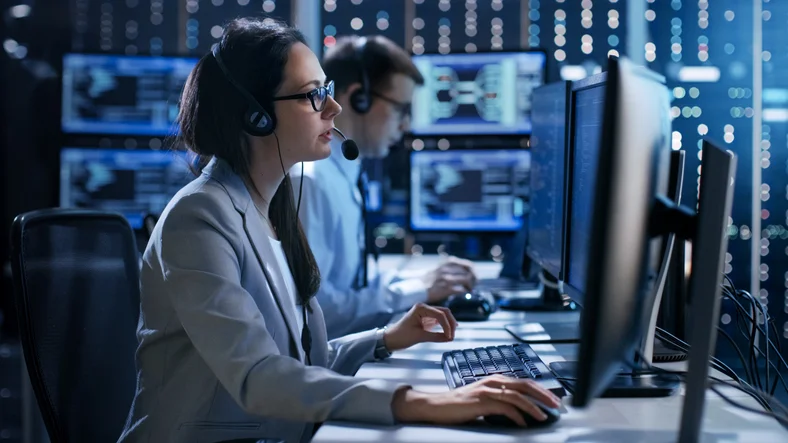Safeguarding Your Company: Corporate Security Basics Introduced
Safeguarding Your Company: Corporate Security Basics Introduced
Blog Article
From Cybersecurity to Physical Procedures: Strengthening Corporate Protection in a Changing Globe
By combining the strengths of both cybersecurity and physical security, companies can create an extensive defense strategy that addresses the diverse range of dangers they encounter. In this conversation, we will certainly check out the altering risk landscape, the demand to incorporate cybersecurity and physical protection, the application of multi-factor verification actions, the significance of staff member recognition and training, and the adaptation of protection steps for remote workforces. By checking out these key locations, we will acquire important understandings right into how companies can enhance their corporate protection in an ever-changing globe.
Understanding the Altering Threat Landscape
The evolving nature of the modern-day world demands a thorough understanding of the altering hazard landscape for efficient corporate protection. In today's interconnected and digital age, dangers to corporate safety have ended up being more intricate and sophisticated. As modern technology developments and companies come to be progressively dependent on digital facilities, the potential for cyberattacks, data violations, and other safety violations has dramatically enhanced. It is crucial for companies to remain informed and adjust their protection measures to attend to these evolving risks.
One trick element of comprehending the altering risk landscape is recognizing the different kinds of hazards that companies deal with. Furthermore, physical dangers such as burglary, vandalism, and corporate reconnaissance continue to be common issues for businesses.
Monitoring and analyzing the hazard landscape is crucial in order to recognize prospective dangers and vulnerabilities. This entails remaining updated on the most recent cybersecurity trends, assessing threat knowledge records, and carrying out regular danger assessments. By recognizing the changing risk landscape, companies can proactively apply appropriate security procedures to reduce risks and secure their possessions, reputation, and stakeholders.
Integrating Cybersecurity and Physical Protection
Integrating cybersecurity and physical protection is vital for extensive company protection in today's digital and interconnected landscape. As companies increasingly rely upon technology and interconnected systems, the limits in between physical and cyber risks are coming to be blurred. To properly safeguard against these threats, a holistic technique that combines both cybersecurity and physical safety and security actions is important.
Cybersecurity concentrates on securing digital possessions, such as systems, information, and networks, from unapproved accessibility, disturbance, and burglary. Physical safety, on the various other hand, encompasses steps to safeguard physical assets, people, and facilities from susceptabilities and threats. By integrating these two domain names, organizations can address susceptabilities and dangers from both physical and electronic angles, therefore enhancing their total safety stance.
The assimilation of these two techniques permits a more comprehensive understanding of security risks and allows a unified feedback to incidents. For example, physical gain access to controls can be improved by integrating them with cybersecurity protocols, such as two-factor verification or biometric identification. Cybersecurity steps can be complemented by physical security measures, such as security electronic cameras, alarm systems, and protected access points.

Carrying Out Multi-Factor Authentication Steps
As companies increasingly focus on thorough safety and security actions, one effective method is the execution of multi-factor authentication steps. Multi-factor verification (MFA) is a safety and security technique that calls for customers to provide several types of recognition to access a system or application. This approach adds an extra layer of security by integrating something the customer recognizes, such as a password, with something they have, like a safety or a finger print token.
By applying MFA, companies can significantly enhance their safety and security posture - corporate security. Standard password-based verification has its constraints, as passwords can be conveniently endangered or forgotten. MFA mitigates these risks by adding an additional authentication factor, making it more difficult for unauthorized people to obtain accessibility to delicate info
There are a number of types of multi-factor authentication techniques offered, consisting of biometric authentication, SMS-based verification codes, and hardware symbols. Organizations require to examine their particular demands and choose one of the most ideal MFA remedy for their requirements.
Nevertheless, the implementation of MFA should be carefully my site intended and implemented. It is critical to strike an equilibrium between security and use to stop individual irritation and resistance. Organizations ought to likewise think about potential compatibility concerns and supply sufficient training and assistance to make sure a smooth shift.
Enhancing Employee Understanding and Training
To strengthen company safety, organizations have to prioritize boosting worker recognition and training. In today's quickly evolving danger landscape, employees play a critical function in guarding an organization's delicate information and properties. Sadly, several safety and security violations occur as a result of human error or lack of recognition. Therefore, organizations require to invest in detailed training programs to educate their staff members about potential dangers and the most effective techniques for reducing them.
Reliable staff member awareness and training programs must cover a variety of topics, consisting of data security, phishing attacks, social design, password health, and physical protection measures. These programs need to be tailored to the specific needs and duties of different worker roles within the organization. Routine training simulations, sessions, and workshops can help employees establish the required skills and expertise to react and determine to safety hazards properly.
Furthermore, organizations must motivate a society of safety and security recognition and provide recurring updates and pointers to keep staff members informed concerning check my site the most recent threats and reduction methods. This can be done through internal interaction networks, such as e-newsletters, intranet websites, and e-mail projects. By cultivating a security-conscious labor force, organizations can considerably minimize the possibility of safety occurrences and shield their useful properties from unapproved gain access to or compromise.

Adapting Protection Measures for Remote Workforce
Adapting company safety and security measures to suit a remote labor force is crucial in ensuring the protection of sensitive details and possessions (corporate security). With the enhancing trend of remote job, organizations have to apply proper security steps to mitigate the dangers associated with this new means of functioning
One critical aspect of adjusting security actions for remote job is developing safe and secure communication channels. Encrypted messaging systems and virtual exclusive networks (VPNs) can aid protect delicate info and avoid unapproved gain access to. In addition, organizations should enforce making use of solid passwords and multi-factor authentication to boost the safety of remote accessibility.
An additional important factor to consider is the implementation of secure remote accessibility remedies. This entails supplying workers with safe and secure access to company resources and data through digital desktop computer framework (VDI), remote desktop procedures (RDP), or cloud-based remedies. These innovations make certain that delicate information continues to be secured while allowing employees to execute their roles effectively.

Finally, comprehensive security awareness training is essential for remote staff members. Educating sessions ought to cover ideal methods for securely accessing and taking care of delicate info, recognizing and reporting phishing efforts, and maintaining the total cybersecurity hygiene.
Conclusion
In verdict, as the danger landscape continues to evolve, it is essential for companies to reinforce their safety gauges both in the Read Full Article cyber and physical domain names. Incorporating cybersecurity and physical safety and security, carrying out multi-factor authentication actions, and boosting staff member awareness and training are important actions towards achieving durable company safety and security.
In this conversation, we will explore the altering risk landscape, the need to integrate cybersecurity and physical safety, the application of multi-factor authentication actions, the relevance of employee understanding and training, and the adaptation of safety and security measures for remote workforces. Cybersecurity measures can be complemented by physical security procedures, such as security cameras, alarm systems, and protected accessibility factors.
As organizations significantly prioritize detailed protection steps, one efficient strategy is the implementation of multi-factor authentication actions.In conclusion, as the risk landscape proceeds to advance, it is crucial for organizations to enhance their protection measures both in the cyber and physical domains. Integrating cybersecurity and physical safety and security, carrying out multi-factor verification actions, and enhancing employee understanding and training are necessary actions in the direction of attaining robust business protection.
Report this page